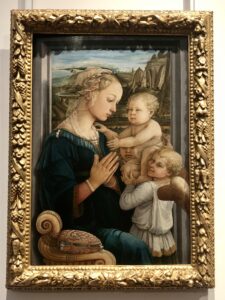
The Renaissance was a revolutionary time of great changes in art and architecture. While visiting the Uffizi Museum in Florence, Italy, we were able to view many of the artistic masterpieces that were created during the Renaissance, including Botticelli’s Birth of Venus and Primavera, Michelangelo’s paintings, Fillipo Lippi’s beautiful paintings, and some of Da Vinci’s pieces. The progression of painting styles from the early Renaissance to the late Renaissance was very evident while touring and exploring the Uffizi Museum. The progression of painting techniques was truly remarkable during the Renaissance. During our class discussion about the progression of painting throughout the Renaissance, we asked several questions to our classmates about various aspects and elements of Renaissance artwork.
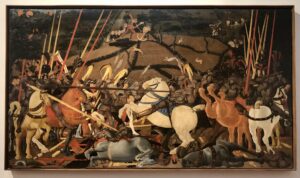
Why were Renaissance artists never satisfied with the way that the art was? Why was there always a constant drive for greatness, and what fueled the artist’s desire to continue to explore new themes, ideas, and techniques? While discussing this idea with the group, people had different ideas about why this continued to happen. Various people explained that as the Renaissance progress, artists were allowed more and more freedom when it came to creating art as time progressed. There was greater competition amongst the artists themselves to be the best. They began to develop a more humanistic approach to art, and they began studying and celebrating the humanities. Throughout the Renaissance, artists explored new themes and ideas, and broke away from just doing the common Religious theme of Madonna and Child. Artists of the Renaissance began harking back and modeling their art after the wonderful art and architecture of the Ancient Greeks and Romans. The Greeks and the Romans had figured out how to draw, paint, and sculpt, but many of these groundbreaking techniques had been lost through the decades. The Renaissance was really a time for artists to go back the great art of the past. The art was also able to improve due to improvements in other subject areas, such as geometry, mathematics, and science. Painting and drawing is a very mathematical process, and so improvements in the math and sciences led to a better understanding on how to make buildings and people look most realistic. It is also just simply human nature to want to be the very best, which also works to explain why artists during the Renaissance were never satisfied with art the way it was. Humans continuously want to improve and get better, and there was a newfound strive for naturalistic and realistic artwork.
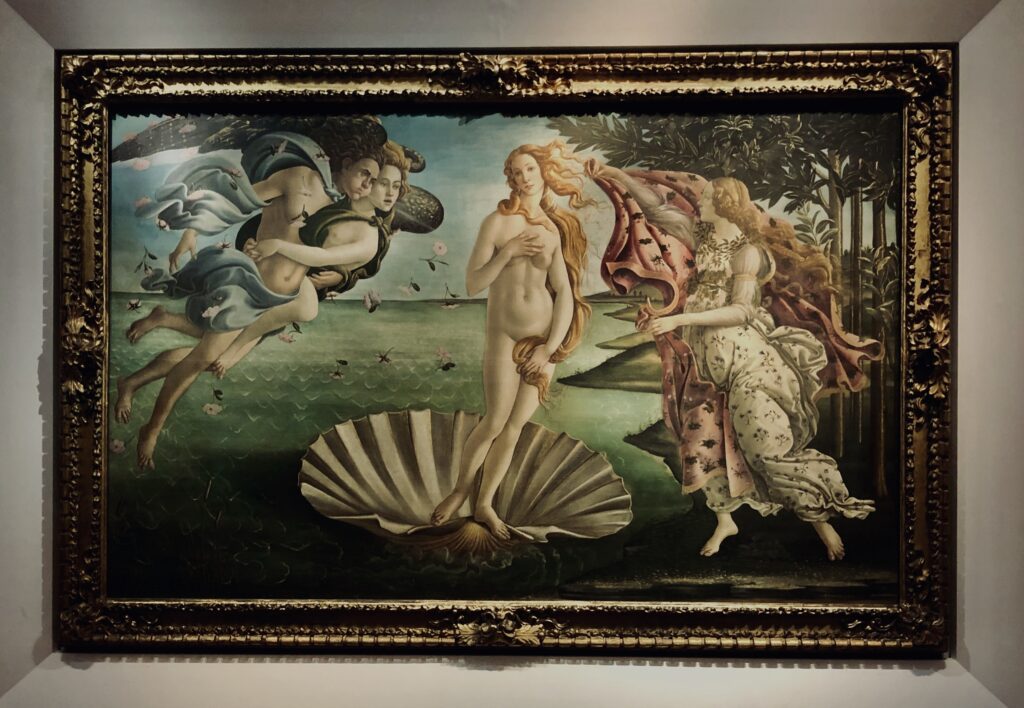
We also discuss in particular Botticelli’s Birth of Venus and how it was so different from other paintings of its time. For this painting, it is clear that Botticelli was not worried or concerned about naturalism or realism. Instead, the piece is whimsical, lyrical, and fairytale-like. The figures in the painting are not grounded, and the background consists of dreamy colors that create the feeling of a story, rather than trying to be realistic. There is attention to detail in the background, but the details add to the whimsical feeling of the piece. This painting is based on Roman mythology, which was very different from the common religious, Christian ideas of the time. There is a strong theme of sensuality in the Birth of Venus. Venus is depicted as a beautiful, idealized blonde woman who attempts to cover her nude body with her hands and hair. Venus shown as an angelic woman, and Botticelli’s use of soft colors help to tell the story of the birth of Venus.
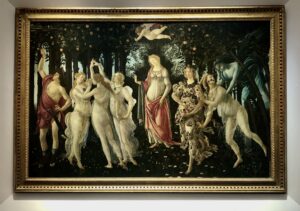
We asked our classmates about what they believed to be the most important change in art that came about during the Renaissance. We thought that this would be an interesting discussion question to ask because everyone would have a different opinion and viewpoint on what was the most important change. Some mentioned that the most important was how the perception of the art itself changed. The Renaissance created a newfound respect for artists and their craft. Artists began to understand how powerful and moving art could be, and realized their own talents in the process. The people depicted in the art also began to look more realistic, and therefore people could relate to the art more easily. Colors became important and a new variety of colors were introduced and used in Renaissance art. Cool colors were used in the back, and warm colors were used in the foreground. Shading became an important aspect of the paintings, which helped to create the more realistic and natural appearance of objects and people. There was a new intensity and detail in Renaissance art that had not been used prior. The background of a painting now consisted of more details, people were painted with varying emotions and expressions, and there was a focus on creating a realistic environment in each painting.
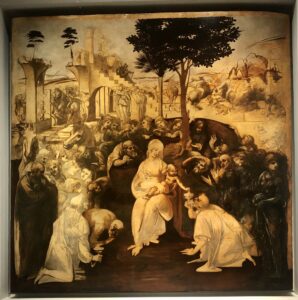
Throughout the Renaissance art changed, and new topics were welcomed, and we were able to explore the progression of art in the Uffizi Museum. Art was no longer created just for churches and no longer consisted solely of Christian subjects and themes. Portraits of families and important figures of the time were popular, and art was valued. The freedom for art and artists that was created was a very important progression that came out of the Renaissance era of art and architecture.
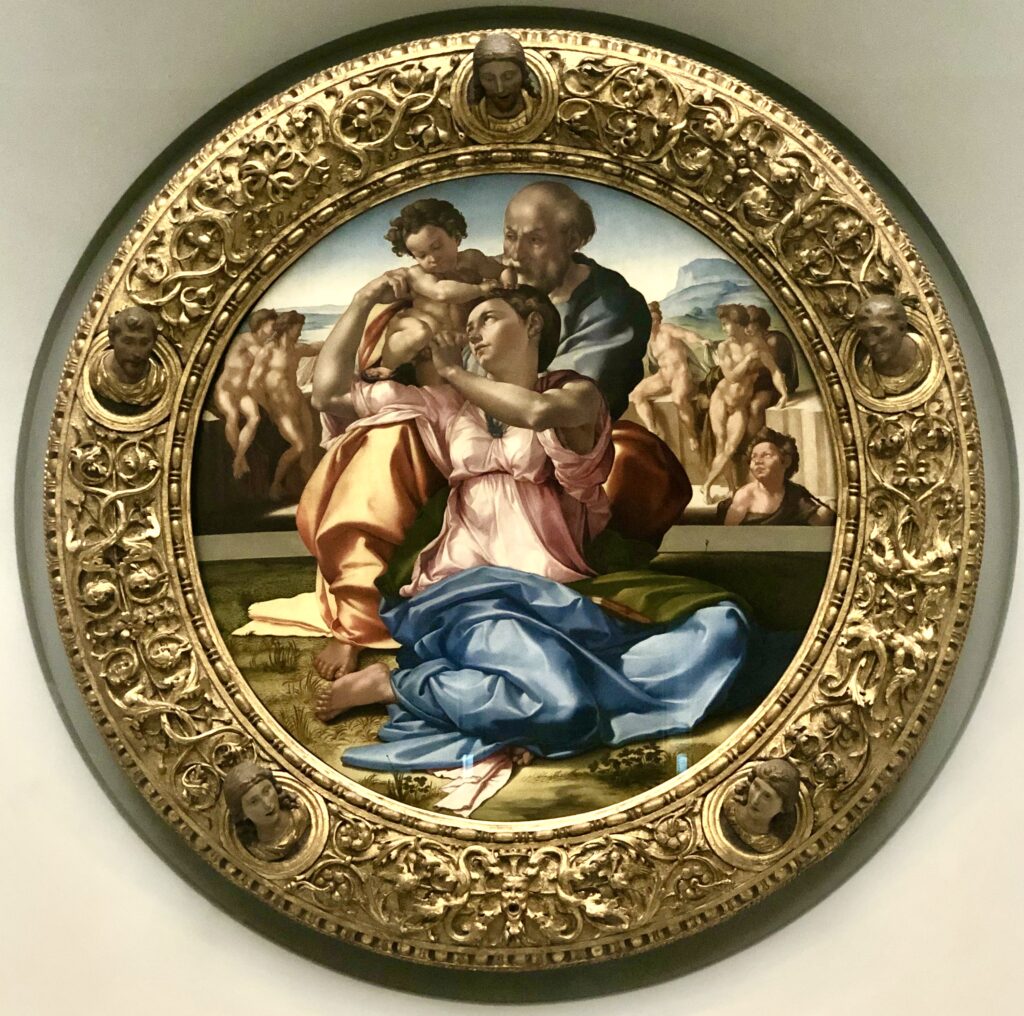
– Claire Bratland, Emily Logan, and Emily Porter
Leave a Reply